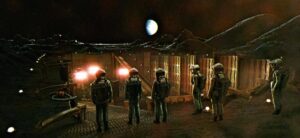Part 4 in the Uncovering Technical Debt BrainBlog Series from Intellyx, for vFunction
 We’ve dug deep into our technology stacks, uncovering all of the legacy artifacts and monoliths that we could find from past incarnations of our organization.
We’ve dug deep into our technology stacks, uncovering all of the legacy artifacts and monoliths that we could find from past incarnations of our organization.
We’ve cataloged them, rebuilt them to modern coding standards, and decoupled their functionality into object-oriented, service-enabled, API-addressable microservices.
Now what? Are we modernized yet?
Well, mostly. There are always some systems that just aren’t worth the time and attention to replace right now, even with intelligent automation and refactoring solutions.
Plus, we acquired one of our partner companies last year, and we haven’t had a chance to merge their catalog with our ordering system yet, so they are still sending us EDI dumps and faxes for urgent customer requests…
We’re never really done with continuous modernization
We’ve compared legacy modernization to the discipline of archaeology. But what happens once archaeologists finish their excavation and classification expeditions? Anthropologists can take over the work from here, interpreting societal trends and impacts even as the current culture continues to evolve and generate new artifacts.
Similarly, discovering and eliminating uncovered technical debt isn’t a one-time modernization project, it’s a continuous expedition of reevaluation. Once an application is refactored, replatformed or rearchitected, it creates concentric ripples, exposing more dependencies and instances of technical debt across the extended ecosystem, including adjacent applications within the organization, third-party services and partner systems.
Mapping the as-is and to-be state of the codebase with discovery and assessment tools is useful for prioritizing the development teams’ targets for each project phase around business value, but business priorities will change along with the application suite.
Development teams also get great utility from conducting modernization projects with the help of AI-driven code assessment and refactoring solutions like vFunction Modernization Hub, but they can realize even greater benefits by retaining the history of what worked (and didn’t work) to inform future transformations…
Read the whole Part 4 of our “Uncovering Technical Debt” series on the vFunction Blog here: https://vfunction.com/blog/evolving-toward-modern-day-goals-continuous-modernization/
©2022 Intellyx LLC. Intellyx retains editorial control of this document. At the time of writing, vFunction is an Intellyx customer. Image credit: Licensed from Alamy “2001: A Space Odyssey” movie still.



